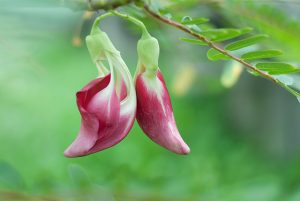
Sesbania Grandiflora – sources, health benefits, nutrients, uses and constituents at NaturalPedia.com
Thursday, August 24, 2017 by Frances Bloomfield
http://www.naturalpedia.com/sesbania-grandiflora-sources-health-benefits-nutrients-uses-and-constituents-at-naturalpedia-com.html
Sesbania grandiflora, more commonly known as hummingbird tree or agastya, is a small, fast-growing tree indigenous to Malaysia and Australia. Nowadays, Sesbania grandiflora is grown and cultivated in humid regions the world over. The name “agastya” is derived from a Vedic sage and practitioner of Ayurvedic Rasayana of the same name. According to one belief, this sage held Sesbania grandiflora in high regard as a medicinal herb, cementing the place of Sesbania grandiflora in Ayurvedic remedies.
List of known nutrients
According to HealthBenefitsTimes.com, Sesbania grandiflora contains the following nutrients:
- Iron
- Phosphorus
- Selenium
- Vitamin B1 (Thiamin)
- Vitamin B2 (Riboflavin)
- Vitamin B9 (Folate)
- Vitamin C
In addition, the leaves and flowers are said to be loaded with sterols, tannins, and saponins. These naturally occurring plant chemicals are notable due to their unique benefits which include lowering cholesterol and boosting the immune system.
Medicinal uses for Sesbania grandiflora
Sesbania grandiflora is dense with antioxidants that reduce the risk of atherosclerosis, a disease wherein the arteries harden and narrow. The antioxidants, such as vitamin C, keep the arteries flexible, prevent plaque formation, and keep low-density lipoprotein (LDL) cholesterol from damaging the arteries. With the lowered risk of atherosclerosis comes a decreased likelihood of heart attack and stroke.
The moderate amount of vitamin B2 in Sesbania grandiflora helps this plant prevent migraines, which are believed to increase in frequency with vitamin B2 deficiency. ChandigarhAyurvedCentre.com recommends dropping one to three drops of Sesbania grandiflora onto the nostril opposite the side of the head experiencing migraines.
Since Sesbania grandiflora has vitamin B9, it can play a role in normal fetal development. Lack of vitamin B9 has been linked to neural tube defects in children, so consumption of Sesbania grandiflora can prevent this from happening.
Note: The fruits have a laxative effect, so eating these in excess can cause diarrhea.
Body systems supported by Sesbania grandiflora
The iron and vitamin C content in Sesbania grandiflora can keep the skin healthy and young looking. Vitamin C is essential for collagen production, while iron is necessary for red blood cells to circulate throughout the body and to the various parts, including the skin. Pale and dull skin is a common symptom of iron deficiency, making Sesbania grandiflora all the more helpful in ensuring healthy skin.
Sesbania grandiflora is a good way to add selenium to the diet. Selenium, as well as vitamin C, can strengthen the immune system and make the body less susceptible to diseases.
Ways to use Sesbania grandiflora
Many parts of Sesbania grandiflora can be added to dishes, but the most frequently used ones are the bitter, mildly tart leaves and flowers. Some cooks counteract the bitterness with coconut milk or garlic. Sesbania grandiflora leaves can be boiled, juiced, and pressure cooked, while the flowers can be deep fried, stewed, steamed, grilled, and eaten raw.
Many Asian countries eat Sesbania grandiflora in different ways. In Thailand, young shoots and leaves are eaten with chili paste. In India, the flowers are dipped in batter and fried in butter, while the leaves and pods are eaten alone or with curries and salads. Flowers are stir fried with meats or added to soups in Vietnam. In Burma, the flowers can be made into a sour soup.
While not frequently eaten outside of Asian countries, Mamta Maya of CookPad.com put together a Sesbania grandiflora recipe that makes it more palatable to Western taste buds.
Where to learn more
Summary
Sesbania grandiflora prevents atherosclerosis, neural tube defects, and migraines.
In addition, Sesbania grandiflora can support the function of the immune system and heart, as well as keep the skin healthy.
Sources include:
HealthBenefitsTimes.com 1
HealthBenefitsTimes.com 2
Feedipedia.org
ChandigarhAyurvedCentre.com
CookPad.com
Tagged Under: Tags: Sesbania grandiflora






